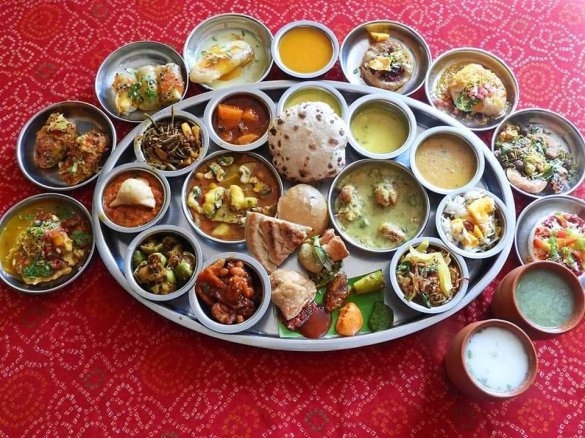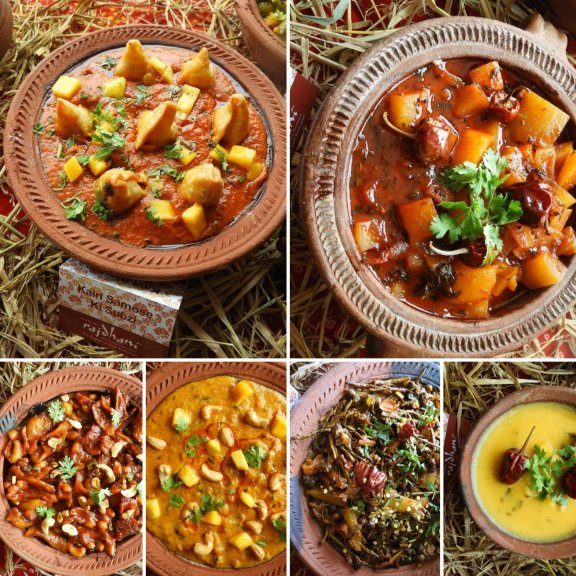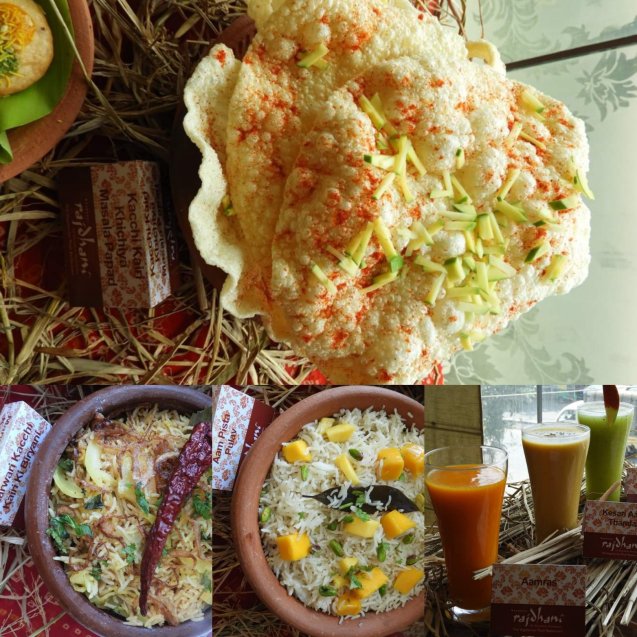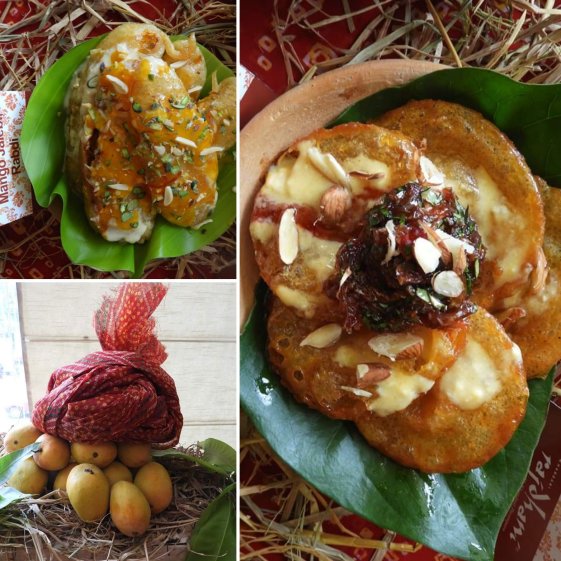Are you looking for something special to make on the occasion of Pongal? Here’s presenting Rava Pongal or Khara Pongal made using semolina.
Pongal Oh Pongal!
The first major festival of the new year is here! It is time for the harvest festival to be celebrated in different parts of India, time to pray for a bountiful harvest this year and to say thanks to the Universe for last year’s. The festival might be known by different names – Makar Sankranti or Uttarayan in Gujarat, Pongal in Karnataka and Tamilnadu, Magh Bihu in Assam or Lohri in Punjab – but the spirit of gratitude, hope and celebration remains the same.

Pongal is a major festival in Tamilnadu, one that is celebrated for 2-3 days. Sweet and savoury dishes using rice and lentils – also called Pongal – are prepared on the occasion. Sakkarai Pongal (sweet pongal) and Ven Pongal (savoury pongal) are prepared in earthen pots, and allowed to overflow, signifying abundance and prosperity. Chants of Pongal Oh Pongal! rent the air.
Apart from the classic versions, there are quite a few more modern varieties of both the sweet and savoury pongal – Proso Millet Sakkarai Pongal, Banana Sweet Pongal and Broken Wheat Sweet Pongal With Coconut Milk, for example. This Rava Pongal is one such modern take on the classic savoury pongal recipe.

Ezhu Thaan Kootu, Vadai and Payasam are some other dishes that are commonly prepared to celebrate the Pongal festival.
More about Rava Pongal
Like I was saying earlier, Rava Pongal is a modern twist on the classic savoury pongal or Ven Pongal. The rice in Ven Pongal is substituted with rava, also called sooji or semolina. Taste-wise, both dishes are almost the same. Rava Pongal, therefore, is a good thing to make for the festival when you are considering avoiding rice.
Rava is a refined form of wheat, and hence not gluten-free. I am not sure of the nutritive benefits of rava, if any. Like many Indian festival offerings, this Rava Pongal is a no-onion, no-garlic preparation, which makes it Sattvik or Jain as well.
This Rava Pongal recipe is completely vegetarian. The ghee used in the tempering is of crucial importance, but you could definitely substitute it with vegan butter in case you are thinking of making a vegan version. Personally, though, I would definitely suggest using the ghee.
Rava Pongal recipe
Now, let’s get to the recipe for Rava Pongal, the way it is made in our family. It’s a rather simple thing to make, taking bare minutes to put together.

I share this recipe with the Foodie Monday Blog Hop. This Monday, the group is sharing #SankrantiSpecials, showcasing harvest festival foods from across India. I chose to share our Rava Pongal recipe for the theme, and hope you like it! Here it goes.
Ingredients (serves 3-4):
- 3/4 cup Bansi rava
- 1/4 cup moong dal
- 3-1/2 cup + 1 cup of water
- 2 tablespoons ghee
- 1 teaspoon cumin
- 2 pinches of asafoetida
- 1 sprig fresh curry leaves
- 2 dry red chillies
- 2-3 green chillies
- Salt to taste
- 1/2 tablespoon black peppercorns
Method:
1. Coarsely crush the black peppercorns using a mortar and pestle or in a small mixer jar. Keep aside.
2. Slit the green chillies length-wise. Keep aside.
3. Wash the moong dal well under running water. Drain out all the excess water. Transfer the washed and drained moong dal to a wide vessel. Measure out the Bansi rava and add to the same vessel.
4. Add 3-1/2 cups water to the vessel. Mix well using your hands, to ensure there are no lumps.
5. Place the vessel in a pressure cooker. Pressure cook for 5 whistles on high flame or till the rava and moong dal are well cooked and mushy. Let the pressure release naturally.
6. When the pressure from the cooker goes down fully, remove the cooked rava and moong dal mixture. Mash it well, using a potato masher. Keep aside.
7. Heat the ghee in a large heavy-bottomed pan. Add in the cumin, curry leaves, asafoetida, dry red chillies and slit green chillies. Let the ingredients stay in for a couple of seconds.
8. Now, turn the flame down to medium. Add the cooked rava and moong dal mixture to the pan, along with salt to taste, about 1 cup of water and the coarsely crushed black peppercorns. Mix well.
9. Cook on medium flame till the mixture starts thickening, 2-3 minutes. Stir intermittently, to prevent sticking to the bottom of the pan. Break down lumps, if any, using your ladle. Switch off gas when the mixture is still quite runny, as it thickens further upon cooling. Your Rava Pongal is ready – serve it hot with a simple coconut chutney or raita of your choice.
Tips & Tricks
1. For best results, use the coarser Bansi rava and not the very fine Bombay rava.
2. Adjust the quantity of green chillies and black peppercorns you use, as per personal taste preferences.
3. Adjust the amount of water you use, depending upon how thick or runny you want the pongal to be.
4. Do not skimp on the amount of ghee. A generous quantity of ghee gives a fragrant, beautiful pongal.
5. Make sure the rava and moong dal is well cooked, before adding them in to the pan.
6. I did not roast the rava or the moong dal before pressure cooking them, as I wanted a mushy consistency of pongal. However, you may dry roast these ingredients separately, on a medium flame till fragrant. This makes the pongal more fragrant and a bit grainy.
7. Slivers of coconut and finely chopped ginger can be used in the Rava Pongal too. We typically don’t.
What do you think of this recipe? Do tell me, in your comments!




















